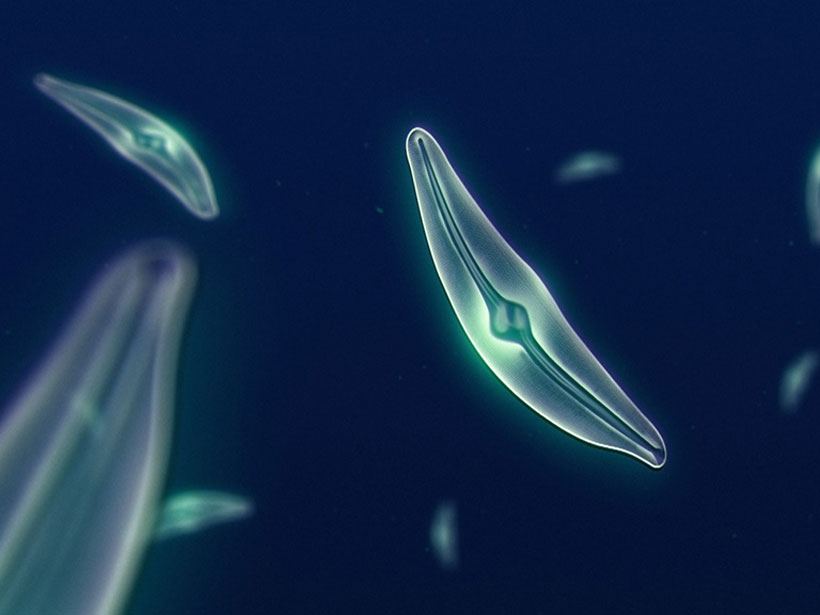Source: Journal of Geophysical Research: Biogeosciences
Wherever light penetrates the ocean, diatoms are sure to be found. These single-celled algae play a foundational role in the marine food web by converting carbon dioxide into organic material. To function, the process involves an enzyme that requires the mineral zinc. However, when zinc is scarce, cadmium—a toxic heavy metal—can take its place.
To date, the geological circumstances that affected the evolution of this flexible biological pathway have been unclear. In a new study, Srivastava et al. use a mineral chemistry network analysis to provide fresh clues into the conditions that influenced diatoms’ unusual ability to use cadmium.
Network analysis is increasingly being applied to explore and visualize the diversity of minerals and their spatial distribution over time. Here the researchers used it to study the relationship between zinc and cadmium over billions of years of Earth’s history, including about 180 million years ago when diatoms are thought to have evolved.
The analysis shows that whereas zinc can form minerals with a wider variety of other elements than cadmium can, both zinc and cadmium can form sulfur-containing minerals that are similar in their chemistry. These zinc and cadmium sulfides are highly weatherable and were often found in the same locations over geological history. They were especially abundant throughout the past 500 million years.
On the basis of these insights, the authors suggest that weathering processes on land—perhaps enhanced by the rise of terrestrial plants—could have released abundant zinc and cadmium sulfides into coastal waters. Diatoms, known for their rapid consumption of nutrients, may have quickly depleted the available zinc, leaving behind plentiful cadmium. Such circumstances could have influenced the evolution of diatoms’ ability to substitute cadmium for zinc.
These results highlight the crucial interplay between the geosphere and the biosphere in the evolution of primary producers in Earth’s oceans. (Journal of Geophysical Research: Biogeosciences, https://doi.org/10.1029/2020JG005966, 2021)
—Sarah Stanley, Science Writer
Citation:
Stanley, S. (2021), How did diatoms evolve to swap zinc for the toxic metal cadmium?, Eos, 102, https://doi.org/10.1029/2021EO155870. Published on 17 March 2021.
Text © 2021. AGU. CC BY-NC-ND 3.0
Except where otherwise noted, images are subject to copyright. Any reuse without express permission from the copyright owner is prohibited.

